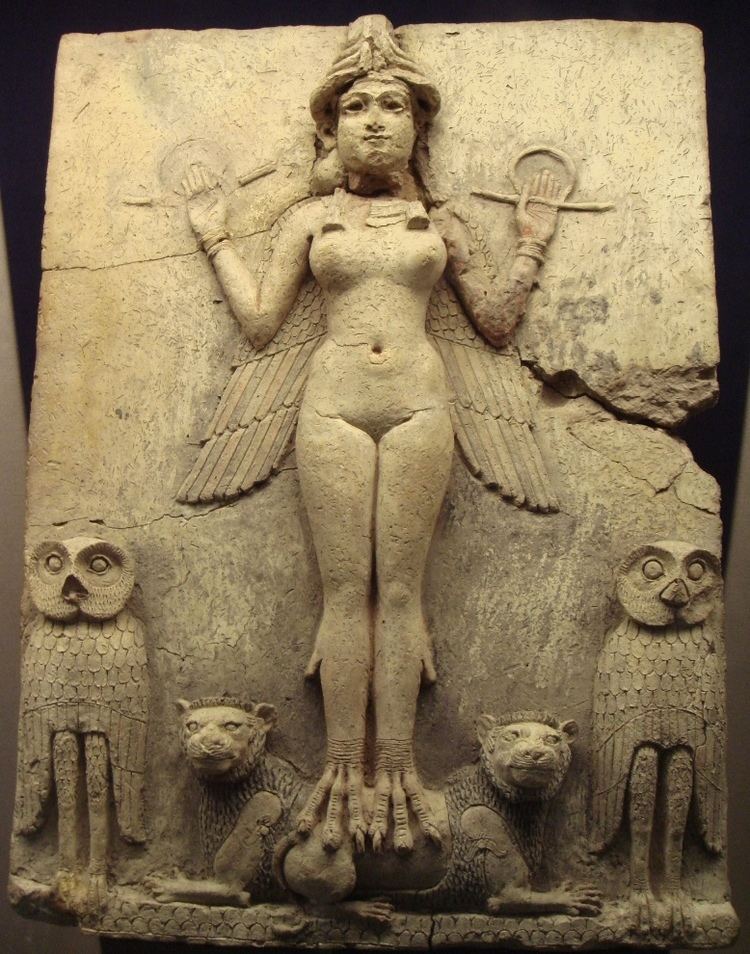 | ||
The Rod and ring symbol is a symbol that is depicted on Mesopotamian stelas, cylinder seals and reliefs. It is held by a god or goddess and in most cases is being offered to a king who is standing, often making a sacrifice, or otherwise showing respect. The symbol dates from the Sumerian Renaissance to the Neo-Assyrian Period, and is commonly explained as a coil of measuring string and a yardstick. Other theories are that they are a shepherd's crook and a nose rope, or that the ring is no rope at all.
Contents
The best known example of the symbol is seen on the Code of Hammurabi stela. The most elaborate depiction is found on the Ur-Nammu-stela, where the winding of the cords has been detailed by the sculptor. This has also been described as a "staff and a chaplet of beads". There is discussion whether the Ur-Nammu-stela is showing the same thing.
Scepter, throne, and ring: Enuma Elish
The myth of Inanna's descent to the nether world describes how the goddess dresses and prepares herself: "She held the lapis-lazuli measuring rod and measuring line in her hand."
In tablet IV of the Enuma Elish, the rod and ring symbol is referenced as:
"They rejoiced, and they did homage unto him, saying, "Marduk is King!"They bestowed upon him the scepter, and the throne, and the ring.
They gave him an invincible weaponry which overwhelmeth the foe."
